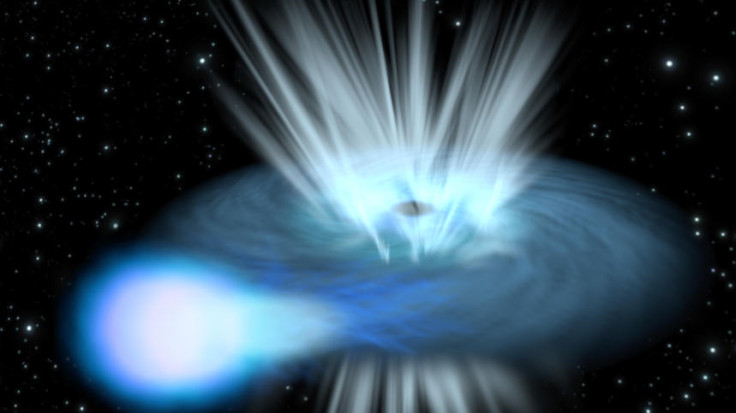Ultra-luminous x-ray sources seen spewing out gas at a quarter of the speed of light

Scientists have spotted two astronomical objects in nearby galaxies spewing streams of gas at 70,000km/s – almost a quarter of the speed of light. These objects are a type of binary system, known as ultra-luminous x-ray sources. A study says this is the first time wind has been seen gusting from these objects.
X-rays are usually only seen coming from supermassive black holes or binary systems (where a black hole, neutron star or white dwarf is feeding on a companion star). However, in the 1980s scientists identified a third type – the ultra-luminous x-ray source. These were 10 to 100 times brighter, in x-ray terms, than ordinary binary systems, but not as bright as supermassive black holes. These objects are still not understood properly today.
"We think these so-called 'ultra-luminous x-ray sources' are special binary systems, sucking up gas at a much higher rate than an ordinary x-ray binary," said Ciro Pinto, lead author of the research.

Researchers from the University of Cambridge used an ESA x-ray telescope to observe three ultra-luminous x-ray sources in galaxies less than 22 million light-years from the Milky Way.
The findings, published in Nature, show all three objects emitted x-rays. However, two of them – named NGC 131 X-1 and NGC 5408 X-1 – appeared to show some of the x-rays being absorbed by gas. This gas was subsequently expelled from the centre of the ultra-luminous x-ray source at almost a quarter of the speed of light.
"This is the first time we've seen winds streaming away from ultra-luminous x-ray sources," said Pinto. "And the very high speed of these outflows is telling us something about the nature of the compact objects in these sources, which are frantically devouring matter."
How is gas being spewed from the centre of the ultra-luminous x-ray sources?
Scientists say gas is initially being sucked in towards the centre of the objects by gravity. At the same time, pressure from radiation pushes it back out. This means the observed ultra-luminous x-ray sources exceed the Eddington limit – the balance between incoming and outgoing gas. This explains how the gas is being expelled from the objects.
Norbert Schartel, an ESA scientist, said: "By observing x-ray sources that are radiating beyond the Eddington limit, it is possible to study their accretion process in great detail, investigating by how much the limit can be exceeded and what exactly triggers the outflow of such powerful winds."
The scientists are planning to search for more ultra-luminous x-ray sources. "With a broader sample of sources and multi-wavelength observations, we hope to finally uncover the physical nature of these powerful, peculiar objects," said Pinto.
Correction: The original article said one quarter of the speed of light was 70,000km/h. This has been updated to 70,000km/s.
© Copyright IBTimes 2025. All rights reserved.






















